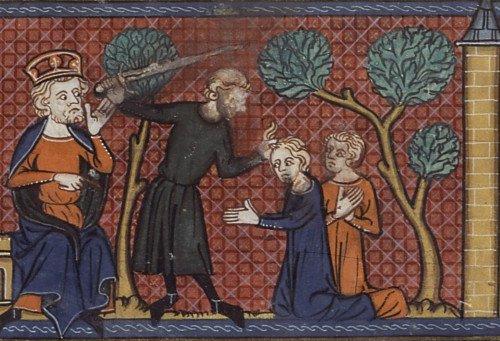Martyrdom for Christ
It was not long before Beatrice met the same fate as her brothers. She was denounced as a Christian, imprisoned and, despite the threats she received, persevered in the faith. Another woman, Lucina, buried Beatrice in the place where her brothers rested, a cemetery on the via Portuense.
The catacomb of Generosa
The catacomb called “Generosa” was on the via Portuense, and the three saints came to be known as the martyres portuenses. Of particular note in the catacomb is the fresco with Byzantine characteristics, which was discovered there, called Coronatio Martyrum, dating back to the 6th century. In it are depicted five characters: in the center Christ who offers the crown of martyrdom to Simplicius, flanked by Beatrice, while on the left are the figures of Faustinus, with the palm of martyrdom in his hand, and of Rufus. Later, the relics of Saint Beatrice and her brothers were brought to the Oratory of the Church of Saint Bibiana around 682 by Pope Leo II. Pope Urban VIII then later decided that the ancient church was to be restored by the hand of Bernini. The latter brought down the Oratory and the marble arch was carried to the Basilica of Saint Mary Major. Some of her relics are found in other parts of Europe, the most significant in Germany.
Beatrice, a beloved name
The name Beatrice has always been popular and loved because of the veneration given the Roman martyr. Its diffusion was also increased thanks to the fame of several figures, such as Beatrice Portinari, the woman loved by Dante Alighieri, and that of other noblewomen and queens.

